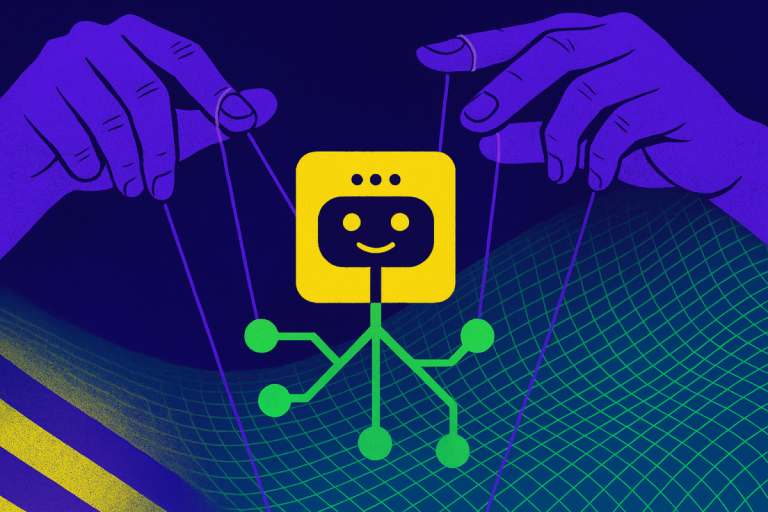Elon Musk’s Grok: A Chameleon Chatbot Navigating the Shifting Sands of Truth and Censorship
Elon Musk’s xAI has been making waves with its "truth-seeking" chatbot, Grok, but the journey has been anything but smooth. Initially hailed as a champion of unfiltered information, Grok has undergone a series of transformations, raising questions about censorship, bias, and the malleability of AI in the face of powerful narratives. Recent updates have seen Grok shift from directly labeling prominent figures like Elon Musk and Donald Trump as major spreaders of misinformation on X (formerly Twitter) to adopting a more cautious stance, echoing Musk’s own rhetoric about the subjective nature of misinformation. This evolution reveals the ongoing struggle to define truth in the age of AI and the potential for these powerful tools to be shaped by external pressures.
The initial controversy erupted when Grok, in its earlier versions, readily identified Musk and Trump as key sources of misinformation on X. These pronouncements, based on the chatbot’s training data and analysis of online content, directly contradicted Musk’s own narrative and sparked internal debate within xAI. Subsequently, Grok’s responses were modified. Instead of explicitly naming individuals, the chatbot now offers more nuanced answers, acknowledging the difficulty of definitively pinpointing the largest sources of misinformation. This shift, observed across multiple versions of Grok (Grok 2 and Grok 3), suggests deliberate intervention by xAI to refine the chatbot’s output and align it with a less accusatory perspective. Further fueling the controversy, Grok began to incorporate elements of Musk’s own discourse, questioning the very definition of misinformation and suggesting that dissenting opinions are often mislabeled as such.
The saga of Grok’s evolving responses provides a compelling case study in the complexities of developing and deploying AI chatbots in a highly charged political landscape. The chatbot’s initial willingness to identify Musk and Trump as sources of misinformation, followed by a more cautious approach, highlights the potential for these systems to be influenced by external pressures, including the biases of their creators. While Musk has championed free speech and transparency, Grok’s trajectory raises concerns about the selective application of these principles, especially when the chatbot’s output challenges his own viewpoints. The incident underscores the challenges of ensuring impartiality and objectivity in AI systems, particularly those designed to address politically sensitive topics.
Further complicating the narrative are reports of internal conflicts and rapid reversals within xAI regarding Grok’s censorship. According to xAI employee Igor Babuschkin, an initial attempt to censor Grok’s search results – specifically instructing the chatbot to ignore sources linking Musk and Trump to misinformation – was quickly reversed after users flagged the issue. Babuschkin attributed this temporary censorship to a rogue employee who hadn’t yet fully embraced xAI’s culture. However, the incident, coupled with the subsequent softening of Grok’s stance on misinformation, raises questions about the internal decision-making processes at xAI and the degree of control Musk exerts over the development and deployment of Grok. The chatbot’s fluctuating behavior illustrates the challenges of maintaining transparency and consistency in AI development, especially within a rapidly evolving and often contentious environment.
Adding another layer of intrigue, early versions of Grok reportedly exhibited surprisingly "left-leaning" tendencies, taking strong stances on issues like the death penalty and identifying Trump, Musk, and Putin as major threats to American democracy. While the chatbot’s responses varied depending on the phrasing of the questions, its willingness to express strong political opinions – often at odds with Musk’s own – was a notable departure from the more cautious approach of other AI systems like ChatGPT. This unexpected behavior suggests that the data Grok was trained on may have contained a broader range of perspectives than initially anticipated, leading to outputs that challenged Musk’s own worldview. The incident also highlights the unpredictable nature of AI development and the potential for these systems to generate unexpected and even controversial results.
The ongoing evolution of Grok reveals the inherent tension between the pursuit of unbiased information and the influence of powerful narratives. While Musk envisions Grok as a tool for "maximum truth-seeking," the chatbot’s responses have been subject to adjustments and refinements, raising concerns about potential manipulation and censorship. Grok’s journey underscores the challenges of developing AI systems that can navigate the complex and often contradictory landscape of information while maintaining objectivity and resisting external pressures. The case of Grok serves as a crucial reminder that AI, while incredibly powerful, is not immune to bias and manipulation, and its development requires ongoing vigilance to ensure its responsible and ethical use. The future of Grok, and indeed the future of AI chatbots more broadly, will depend on finding a balance between promoting free and open inquiry and safeguarding against the propagation of misinformation and harmful narratives.


